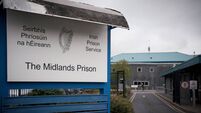Homes beyond reach of average earners
As the Cabinet meets today to discuss plans to boost the supply of affordable homes in urban areas, a survey highlights the likely fallout from the recent explosion in house prices in the capital.
The IBF Housing Market Monitor for the last quarter of 2013, published yesterday by the Irish Banking Federation, reveals the rise in house prices in Dublin, coupled with a growing shortage of accommodation there remains a concern.
A shortage of new housing in Dublin and other urban centres is causing property prices to soar, as demand for family homes is not being met by supply.
The monitor shows that, while positive trends emerged in 2013, significant national variations in market conditions persist.
With 2013 as a whole showing increases in properties listed for sale, as well as in property transactions, the IBF Housing Market Monitor Q4 2013 shows:
- 7% increase in properties listed for sale.
- 10% increase in housing market transactions.
- 6.1% increase in the level of mortgage approvals, with a decline of 5% in the level of drawdowns.
In his commentary in the IBF Housing Market Monitor, Ronan Lyons, assistant professor of economics at TCD, writes that the trends seen in the volume of transactions registered throughout 2013 is an encouraging sign, especially as this rise was nationwide and not just Dublin.
He also points to the “hangover” experienced from the end of mortgage interest relief in 2012, commenting that it seems to have impacted the mortgage market rather than the housing market.
However, despite the positive signs indicated by increasing transactions and property listings, Lyons raises concerns about the two- tier market which he says is firmly established, and the factors driving this — including a growing shortage of housing supply in Dublin, and a sharp increase in prices there.
“Perhaps the most startling thing to emerge from the report is just how few new homes are being built. Fewer than 1,400 homes were completed in Dublin during 2013, when prices rose at double-digit rates, compared to more than 2,200 during 2010, when prices were falling at double-digit rates.
“While this marks a small increase on the figure for 2012, it is surely of huge concern to policymakers, as is the lack of commencements of new homes. Fewer than 1,500 new homes were started in Dublin in 2013, although that is double the number started in 2012.
“This compares to roughly 10,000 new households being formed a year in the capital. Taking into account up to 5,000 family homes that come on the market each year due to down-trading and executor sales, that still leaves a significant shortage of accommodation in Dublin that is growing year on year.”
Mr Lyons said the Government appeared to be aware that public policy should aim for stability in house prices.
“While overhang from the bubble still persists in many parts of the country, Dublin has had a lack of housing for over a year and yet there is still almost no response in construction. The obstacles to the resumption of meaningful levels of activity in construction in the capital must be understood and soon, if Dublin is to remain competitive and affordable for those on average incomes”.












